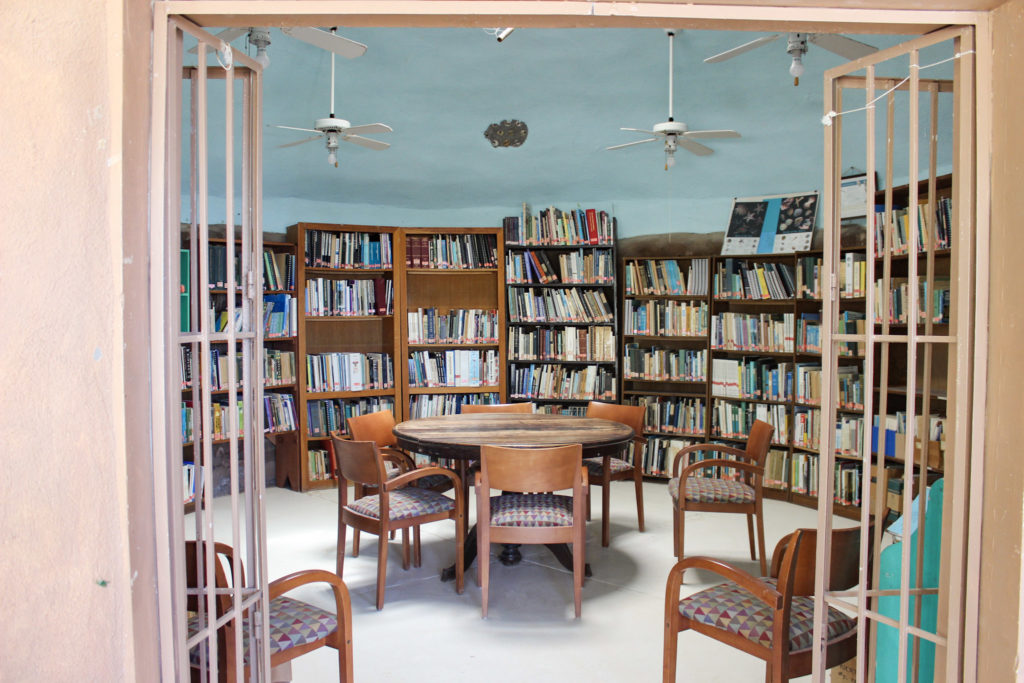





























About
Interested in the history of ecosystems and the wildlife within it? Then CEDO is a must add to your trip bucket-list! It stands for Center for the study of Deserts and Oceans. Their goal is to increase awareness about environmental conservation through research and they offer an exciting museum to learn more.
Getting There
Located in Las Conchas, this stunning museum offers classic Mexican charm with an ocean view. The architecture features many rounded/arch elements with dark wood accents. Inside the building, there are colorful tiles at every turn, bringing warmth to the nearly all-white walls. The campus features exhibits, a botanical garden, dormitories for the students taking classes, a laboratory, library, local art, as well as a well-stocked gift shop.
In the gift shop, you'll find apparel for the whole family, coffee mugs, glassware, and a large selection of books. The book selection offers reading on the Sea of Cortez, Pinacate Biosphere, and sea shells. Many of the residents of Las Conchas have volunteered as tour guides over the years and continue to do so. It's quite easy to spot in the community, as there is a 65-foot Fin Whale skeleton out front. It was put on display in 1984 after washing ashore in the Estuary Morua. In addition, you'll be able of observe a skeleton of a Vaquita. Be sure to bring your camera!
Non-Profit Efforts & Research
This non-profit is a collaboration between organizations in both Mexico and the United States. For over 40 years, they've studied the ecosystem of the Upper Gulf of California/Colorado, the Sea of Cortez, and the Sonoran Desert. Overall, they aim to create an environment where all biodiversity can thrive. In addition, they work towards building a community that inspires people to do their part to protect their ecosystem.
Their research has shown that between the increased population and tourism, the ecosystem was changing at an unprecedented rate. These changes to the ecosystem caused the animal habitats to change as well. Thousands of people live in the 9 cities around the area and many make their living from fishing and tourism. In order for people to continue this lifestyle while still allowing the biodiversity to thrive, changes had to be made. And so, an educational process with limits was placed on shrimping over the years. Additionally, these regulations were put in place to protect the Vaquita, which now number less than 15.
CEDO's primary five pillars include:
-
Community Well-being
-
Citizen Action for Species & Ecosystems Conservation & Monitoring
-
Sustainable Fisheries & Aquaculture
-
Education, Outreach, & Communication
-
Academic Services & NaturArte
Excursions through CEDO
Along with their seminars, CEDO also offers excursions to some of the most popular activities in Rocky Point. Some of the tours include the Pinacate & Grand Desierto de Altar Biosphere Reserve, San Jorge Island Adventure, Estuary Exploration, Tidepools, Oyster Experiences, and more.
When you book excursions through CEDO, you are supporting their conservation and research efforts. So, you get to enjoy an exciting adventure while making a donation to preserve the areas and ecosystems that you love in Rocky Point. If you would like to donate or become a volunteer, you'll find all necessary information on their website.
Local Tips
- Anyone who's interested in giving tours can volunteer through CEDO.
